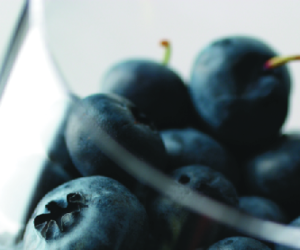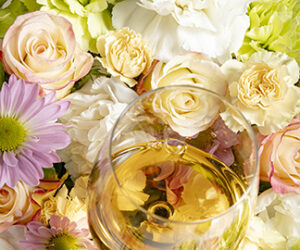
Ah, spring! The trees come into leaf, plants bloom again and the green lawns are covered with … dandelions.
Dandelions, whose scientific name is Taraxacum officinale, are a member of the aster family. Its popular name is the English corruption of the elegant French name, dent-de-lion, or “lion’s tooth.” (The more vulgar name, pisse-en-lit, has not been applied in English.) When the weather warms up, this perennial weed emerges in the millions and covers the grass with its yellow flower, which is actually a virtual bouquet of about 150–200 tiny flowers. Each flower then turns into a seed-producing floret in the form of a puffball that looses its seeds into the wind, propagating the plant. Dandelions grow throughout the temperate zone, from the southern United States to northern Ontario.
What good are these troublesome weeds? Well, actually, they are quite useful. So useful, in fact, that they were intentionally imported to North America by the Pilgrims. This little plant was particularly useful to the early colonists, both for medicine and for food.
Young dandelion greens are considered to be a delicacy in parts of Europe. In the spring, the leaves are tender and fresh and are used for salad greens, either raw or boiled. The roots may also be roasted and used as a coffee substitute. The flower heads provide forage for bees. In parts of Eastern Europe, the milky sap is used in folk medicine. Try using the fresh leaves in early spring in a garden salad; they really are quite tasty! If you’re a bit more adventurous, you also can try making dandelion coffee. Simply scrub the root well, bake in an oven at low heat, then grate it finely and use the same as coffee grounds. Alternately, you can skip these two uses and use the dandelions for making a delicate, but delicious, wine.
Making dandelion wine is a labor-intensive process, because only the petals should be used. Avoid using the whole heads; this can introduce other vegetal matter and bitter flavors. The key to making delicious dandelion wine is using clean, chemical-free petals — and only the petals. The green stuff that surrounds the dandelion flower will give your wine an off-flavor, so be sure to peel it back and then pull or cut the petals from the stems.
The petals should be gathered when the plants are fresh, and before these weeds have been sprayed with herbicide or been “watered” by the neighborhood dogs. This usually means that you should gather dandelions in April or early May, depending on your climate. In Western Europe, it is typically St. George’s Day, April 23. In climates with a later spring, it may be as late as May 24. Later than this the dandelion will not provide the best flavor due to sunburning of the florets.
Dandelions, as indeed with all flowers, lack some basic ingredients for making fine wine. They are low in nutrients, low in sugar and low in acid. They are also low — or, indeed, totally lacking — in vinosity, that elusive characteristic that defines a wine as being what it is. They are also low in flavor, so in making wine from dandelions or any flowers we need to correct for this.
That means that we need to adjust the recipe to make up for the deficiencies, and regard the dandelion as primarily a delicate flavor source. It will be necessary to ensure an adequate supply of nutrient for healthy yeast growth, sufficient sugar to produce an adequate alcohol level, acid to make up for the almost total lack of it in the flower heads and something to add vinosity without dominating the taste. My ingredient of choice in the latter case is chopped raisins, although one also could use white grape concentrate. This strikes me as cheating, since the grape flavor will intrude. When this happens, the wine it is no longer really a dandelion wine. (Another note: In most competitions, “country wines” such as dandelion wine may not contain grapes in any form, whether fresh or concentrate, although raisins are allowed.)
Some authors prefer acid blend as a means of increasing the acidity, and this is what the recipe below uses. However, traditional “country” recipes — developed before acid blend was widely available — use lemon juice. It is up to the winemaker to see which gives the preferred taste. Keep in mind that lemon juice, in large quantities, will add its own flavor.
Dandy Wine: Step by Step (One Gallon/3.8 L)
Ingredients
- 8 cups dandelion petals
- 2-1/2 lbs. (1.13 kg) sugar
- 1 lb. (0.45 kg) raisins (chopped)
- 4 tsp. acid blend for white wine
- 1 tsp. yeast energizer
- 1/4 tsp. potassium metabisulfite
- 1/4 tsp. tannin
- 1 gallon hot water
- Lalvin EC-1118 yeast
- 1/4 tsp. ascorbic acid
Step by Step
Place all ingredients except the yeast, yeast energizer and ascorbic acid in a clean and sanitized primary fermenter and pour the gallon of hot water over them. Stir with a sanitized spoon to dissolve the sugar. When cool — about room temperature, but not more than 75 °F (24 °C) — add the yeast and yeast energizer. If you can’t find the Lalvin strain I prefer, use another quality yeast intended for white wine. For the energizer, I use half diammonium phosphate (DAP) and half yeast hulls.
Ferment for three days, then strain off into a closed fermenter fitted with an airlock, leaving petals and raisin pulp behind. The first racking will likely be in about three weeks when the specific gravity has dropped below 1.000. The second racking should be performed when the wine has thrown a deposit and is beginning to clear (after about three months).
When the wine is clear and stable, fine if desired, add one quarter teaspoon ascorbic acid as an antioxidant and bottle. The wine may be slightly sweetened to about one percent residual sugar if a stabilizer such as potassium sorbate is also added to prevent re-fermentation in the bottle. Due to the virtually non-existent protein level, fining is not usually necessary. If, however, the wine does not clear spontaneously, kieselsol — followed in 24 hours by chitin — is recommended. Be sure to follow package directions and do not over-fine. Because you are not likely to be making huge quantities of this wine, we do not recommend bentonite, which tends to be wasteful of wine in small quantities.
This will produce a fairly alcoholic wine since the starting specific gravity will be around 1.100. If a lighter wine is desired, the sugar may be reduced accordingly — but the starting SG should not be below 1.080, which calls for about 2 pounds of sugar (make sure you check with a hydrometer). The acid level will be about 5 grams per liter. If you prefer a higher acidity level, it is a simple matter to adjust it when formulating the wine. For example, each additional teaspoon of acid blend will raise the acidity by about 1.25 grams per liter. I use a reductive acid blend from Wine Kitz; failing that, I suggest a blend of 80% tartaric, 15% malic and 5% citric acid.
This is a light wine with a similarity to some Sauternes — that is, an aromatic white wine with a delicate flavor, light color and taste. It is also fast-maturing, typically being ready for Christmas or New Year’s period, although it will continue to improve for another six months.






